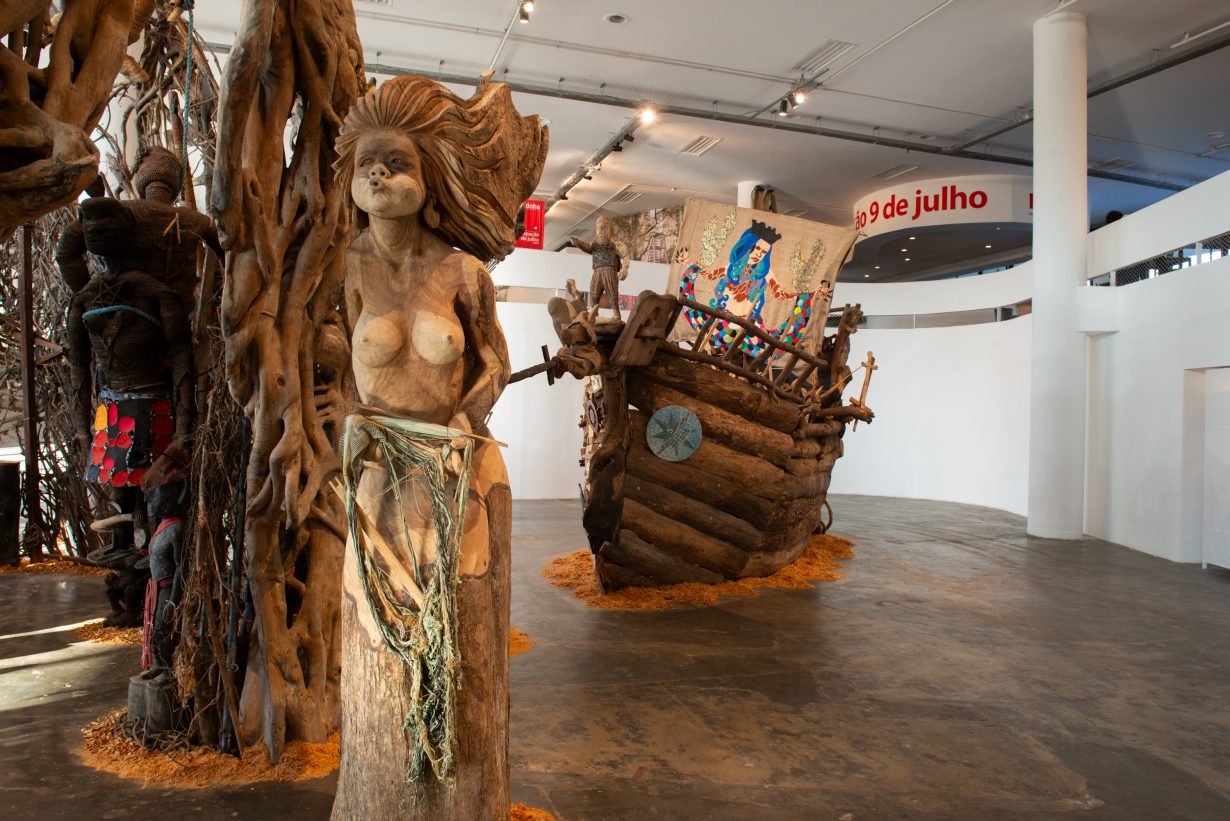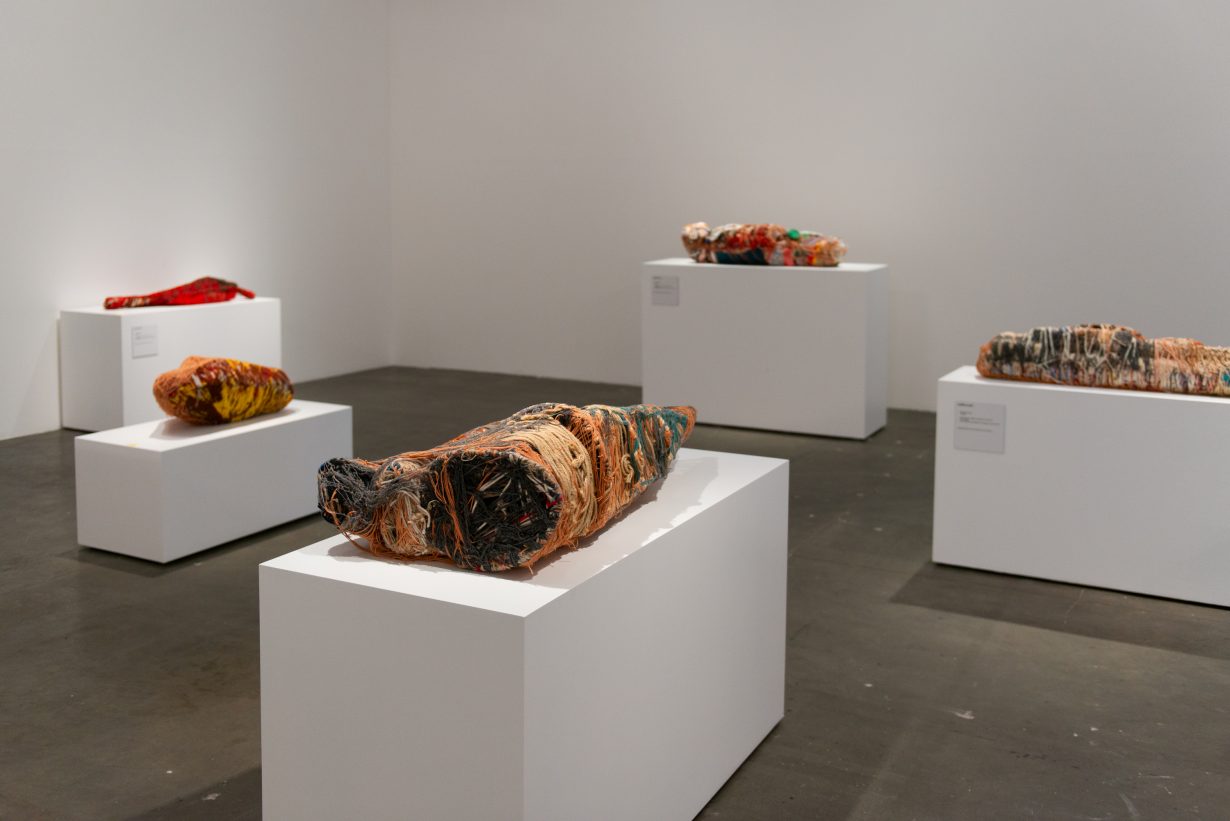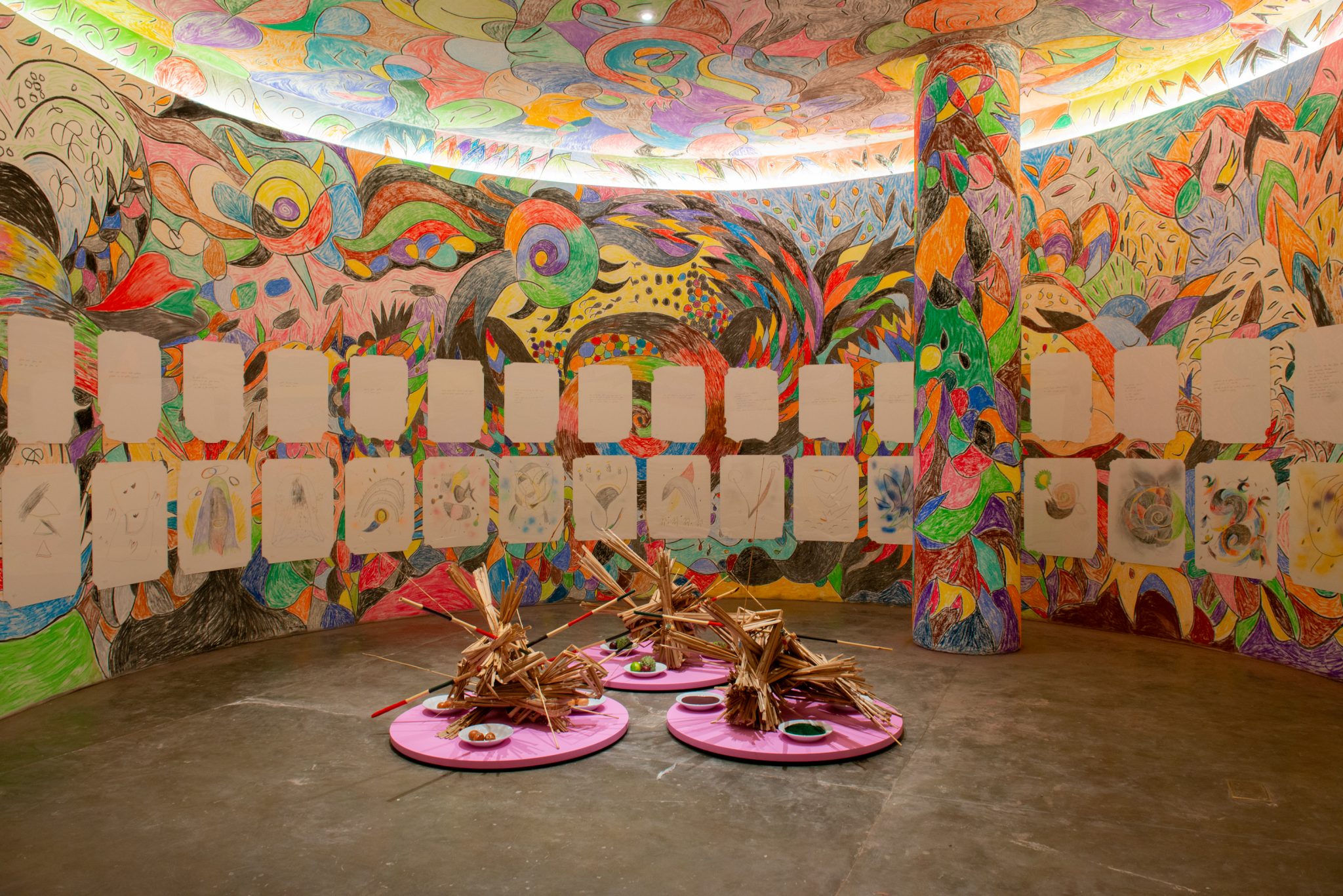Choreographies of the Impossible brings in long-excluded artists and wears a sense of visceral anger with pride
This is a show constructed on the scorched earth that colonialism left in its wake. It is a message ably delivered by Ibrahim Mahama, the Ghanaian artist tasked with opening Choreographies of the Impossible, as the biennial is titled. Amid a derelict landscape of upturned ceramic pots, a railway track – its sleepers dirty, its tracks rusting – leads the visitor into an exhibition that wears its visceral anger with pride. It is the first time the 72-year-old biennial, the biggest art event in a Black-majority country, has been led by a group of Black-majority curators, and Manuel Borja-Villel, Grada Kilomba, Diane Lima and Hélio Menezes refuse to let their white audience off the hook. Railway lines were, after all, just one of the many ‘civilising’ methods with which the white world conquered and exploited countries in Africa, Asia and South America, the continents from which the majority of the 121 artists participating are from.


A reflection of such infrastructure and industrial ‘progress’, the extractivist purpose for which was barely disguised, can be found in the works encountered at the end of Mahama’s line. Thuë pihi kuuwi (A woman thinking, 2023), by Aida Harika, Edmar Tokorino and Roseane Yariana, all Yanomami, is typical of an emerging generation of Indigenous filmmakers whose work is ostensibly documentary but records both this world and the world of the spirits, without division. Here we witness the preparations for when the village shamans will contact the xapiri gods. In its steady narration, the film condemns the ongoing genocide of the Yanomami through deforestation and mining. It is a message present too in Killing us Softly… with their SPAMS… (Songs, Prayers, Alphabets, Myths, Superheroes…) (2023), a vast walk-through installation by Kidlat Tahimik, made in collaboration with traditional Filipino wood carvers. The charming, roughly hewn finish of the statues belies the extreme violence they portray, in which invading military, armed with chainsaws, swarm from a boat; figures are strung up and lynched; Captain America rides a missile; and a Trojan horse is wheeled in. In a wall text, the artist (who is better known as a film director) describes his intention as ‘cinematic’, and sure enough, in among this chaos is a wood-carved man filming with a wood-carved camera. It asks, how do we mediate historic and neocolonial violence? If the overt politicking of the opening sequence laid out by curators was maintained, the exhibition would soon run out of rails, but it gets cleverer than that.


There are plenty more bombastic installations over the proceeding two floors of the Bienal’s curving, modernist, Oscar Niemeyer-designed home. There’s Igshaan Adams’s pearl and bead carpets and ceiling-hung wire sculptures (Desire Lines, 2022) and Daniel Lie’s vast boughs of chrysanthemums and textiles (Non-Negotiable Condition, 2021), a work made, Lie says, with ‘beyond human forces’ such as ‘bacteria, fungi… spirits, ancestors’. Both help pace a show of over 1,000 objects with their great scale, but add little in and of themselves: they feel too self-conscious in their desire to make a splash. Rather, it is often in the quietest moments, though no less confrontational, that the exhibition exudes its power. Nicaragua-born Rolando Castellón’s biomorphic drawings in mud on graph paper, with their subtle use of nature as material, have a religious quality, a faith found in nature, not against it (something the pictorial paintings of Denilson Baniwa suggest of missionary Christianity). Tadáskía, an artist several generations Castellón’s junior and easily one of Brazil’s most interesting young artists, follows suit in her templelike gallery, with its painted psychedelic ceiling and wall mural. In a storm of swirling pink, pastel green and red, what might be sperm meet eggs, and attached to the painted walls are a series of pithy poems by the artist, collectively titled Mystical Black Bird (2022), in which she imagines herself as the titular animal. One reads, ‘Our winged transformation, I know I’m not on the right lines’, another, ‘my beak is a flower’: enigmatic, they feel like the holy text of some animist religion. Questions of physical transformation and mutability of form continue in the artist’s building of three small bamboo pyres on the floor (with the potential of the wood to reduce to ash), each surrounded by offerings of fruit (already beginning to shrivel).

In her essay for the Bienal’s catalogue Diane Lima writes about the ‘impossible… ontology of Black women’, and how a sense of constant movement and transformation of the type Tadáskía conjures is the best – perhaps the only possible– means of ‘revolt against the compulsory condition’ (be it racism, patriarchy, capitalist or state violence, or any other of the ills visited by the majority on the fragmented minority). If the Bienal occasionally feels like a powder keg of different woes, it has a conceptual framework to back up that scattershot approach. Its twists, turns and twirls form a methodology through which to break down the edifice of the colonial world. In this light, delivering the exhibition’s greatest gut punch is François Pain and Min Tanaka’s 1986 collaboration, in which the French filmmaker invited the Japanese dancer to perform at La Borde, the psychiatric clinic in France where Félix Guattari worked and with which Pain had a long association. It is a work of sublime beauty and terrifying anguish, a vision of the body in both its monstrous fragility and enduring ability. To the soundtrack of Joseph Canteloube’s operatic folksong Baïlèro (1923–30), Tanaka stumbles past the clinic’s residents, dressed in rags; his body contorts and spasms as if in an advanced neurodegenerative state; he kicks off his old boots, and his feet, horribly bent inwards, don’t seem to work. This ongoing seizure eventually leaves the dancer in a state of pitiful collapse. If some unknown force is attacking Tanaka’s body, it becomes symbolic of so many of the other bodies in this show that have been attacked. Within an impossible state of violence, as Tanaka’s movement demonstrates, beauty can still be choreographed. Indeed, Lima continues in her essay, invoking one of the oldest art historical ideas possible, ‘beauty became a synonym of escape for me’.

A similar effect emanates from two other dance works: Ukrainian-born filmmaker Maya Deren’s 1948 Meditation on Violence, in which actor Chao-Li Chi moves between gracefully fluid movement of the arms and gestures of rigid defence; and Corbeaux (Crows, 2014), by Bouchra Ouizguen, in which half a dozen women in black gowns and white headbands line up in a deserted quarry. By some unknown force, as if in a kind of angry prayer, their heads bow in aggressive unison, by which we might read the patriarchy pushing them to genuflection. The constrained body, the attacked body, the body as a material: these are themes resurrected in Judith Scott’s room of fibre-wrapped objects. In one meaty work (all untitled and made during the 1990s), red threads appear like capillaries of blood rising to the surface; in another work, a child’s form is mummified in red, yellow and orange string. Scott was born with Down syndrome and deaf; though the work is not defined by this fact, there is a sense of claustrophobia perhaps born of society’s disabling of the artist.
Most artists are exhibiting several works. Sidney Amaral, a Black Brazilian painter who died young in 2017, has one painting in the show. On the bottom left corner of the canvas is a figure, likely the artist – portly, stripped to his waist and leaning on a stick – walking through a great monochrome of black paint. Above him, dwarfing him, filling the upper half of the canvas, are the huge spiralling ramps of the Bienal’s iconic pavilion. With pathos, Amaral titled the painting The Foreigner (2011). Foreign no more, the work by artists excluded for so long are now inside the building, blowing up the canon.
Choreographies of the Impossible at Ciccillo Matarazzo Pavilion, São Paulo, through 10 December
